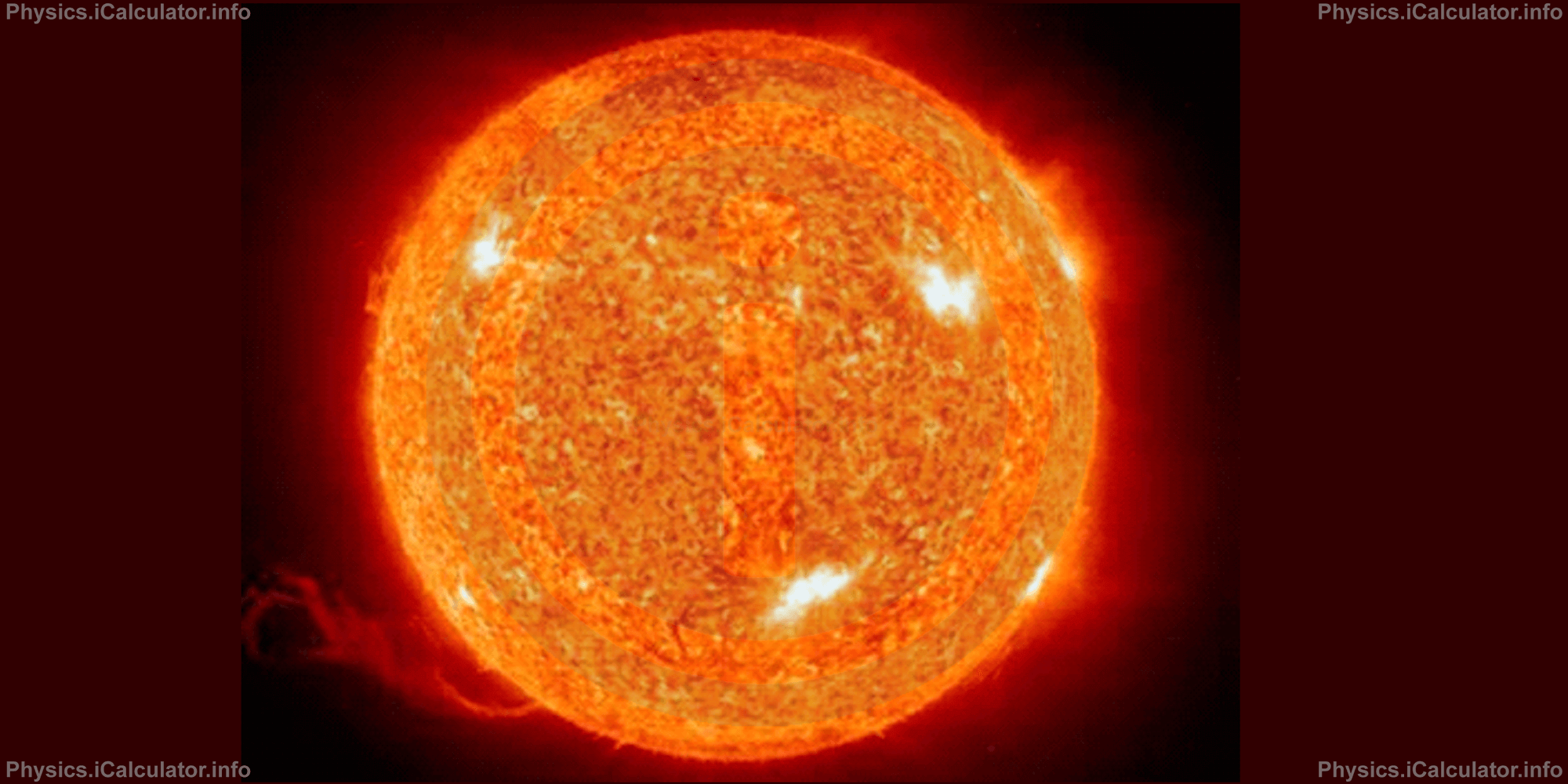Menu
Physics Lesson 22.2.1 - Basic Features
Please provide a rating, it takes seconds and helps us to keep this resource free for all to use
Welcome to our Physics lesson on Basic Features, this is the first lesson of our suite of physics lessons covering the topic of Sun and Planetary Motion, you can find links to the other lessons within this tutorial and access additional physics learning resources below this lesson.
Basic Features
The Sun is a fiery giant orb of mass M = 1.9989 × 1030 kg, mostly made up of hydrogen and helium. The Sun is an average sized star formed about 4.6 billion years ago. The radius of the Sun is 6.96 × 105 km. The Sun is located at centre of our Solar System and it is the main source of energy for it. All planets are "fed" by portions of solar energy originating from the Sun.

You have reached the end of Physics lesson 22.2.1 Basic Features. There are 10 lessons in this physics tutorial covering Sun and Planetary Motion, you can access all the lessons from this tutorial below.
More Sun and Planetary Motion Lessons and Learning Resources
Whats next?
Enjoy the "Basic Features" physics lesson? People who liked the "Sun and Planetary Motion lesson found the following resources useful:
- Features Feedback. Helps other - Leave a rating for this features (see below)
- Cosmology Physics tutorial: Sun and Planetary Motion. Read the Sun and Planetary Motion physics tutorial and build your physics knowledge of Cosmology
- Cosmology Revision Notes: Sun and Planetary Motion. Print the notes so you can revise the key points covered in the physics tutorial for Sun and Planetary Motion
- Cosmology Practice Questions: Sun and Planetary Motion. Test and improve your knowledge of Sun and Planetary Motion with example questins and answers
- Check your calculations for Cosmology questions with our excellent Cosmology calculators which contain full equations and calculations clearly displayed line by line. See the Cosmology Calculators by iCalculator™ below.
- Continuing learning cosmology - read our next physics tutorial: The Moon's Movement. Eclipses. Calendars
Help others Learning Physics just like you
Please provide a rating, it takes seconds and helps us to keep this resource free for all to use
We hope you found this Physics lesson "Sun and Planetary Motion" useful. If you did it would be great if you could spare the time to rate this physics lesson (simply click on the number of stars that match your assessment of this physics learning aide) and/or share on social media, this helps us identify popular tutorials and calculators and expand our free learning resources to support our users around the world have free access to expand their knowledge of physics and other disciplines.